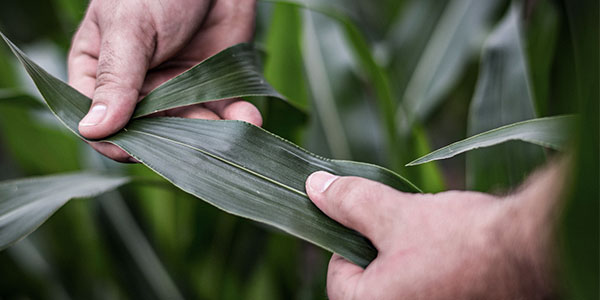AGRONOMICSUPPORT
YOU CAN TAKETO THE FIELD
Nutrient Knowledge Leads to Higher Yields
We all know that overall plant nutrition plays a major role in in the development of a healthy, high yielding crop. However, just as important, is the overall health of the soil. By getting the soil pH in the correct zone, growers can capitalize on nutrient efficiency. Each crop requires a certain amount of nutrients that help aid in production. As the 2018 harvest season comes to a wrap, it is important to replenish the nutrients that have been taken through crop removal. One way to ensure you are establishing a good foundation for fertility balance for your upcoming crop, is by soil sampling.
As you analyze your soil samples, note that soil nutrients are broken into three different categories: 1) macronutrients, 2) secondary nutrients, and 3) micronutrients. Below will you find information and helpful facts that will aid you in understanding how each of the macronutrients and secondary nutrients help to sustain a healthy crop.
There are three types of Macronutrients: Nitrogen, Phosphate, and Potassium.
Nitrogen (N): This is the most important nutrient in all plant development. It aids in crop growth and is part of every living cell of the plant. Nitrogen works in corn, like gas in a car. We don’t want to run out. It is necessary for chlorophyll synthesis and plays a crucial role in photosynthesis. The plant uptake can either be (NH4+) Ammonium or (NO3-) Nitrate form. Note that with Nitrogen being a positive charged ion, and the soil being negatively charged, it is prone to leaching.
Phosphate (P2O5): Phosphate is essential for plant growth and is a key component for a normal production cycle. It plays a significant role in capturing and converting the sun’s energy into useful plant compounds. It is able to stimulate root development and increases stem and stalk strength. Overall, it helps increase genetic potential. Ever notice abnormal discoloration in your crop? It may be due to low levels of Phosphate.
Potassium (K2O): Potassium is vital to photosynthesis. It is a key nutrient that aids in root growth and helps the plant go through environmental stress. It also helps reduce water loss and wilting. Potassium helps the flow of other nutrients through the plant. It builds cellulose and helps translocate sugars and starches.
The three Secondary Nutrients are: Sulfur, Calcium, and Magnesium.
Sulfur (S): Sulfur is important for nitrogen utilization. It is recommended that you do a 10:1 ratio of sulfur with nitrogen. For every 10 pounds of nitrogen applied, you need one pound of available sulfur. It allows for the formation of proteins and aids in seed production. Sulfur is a big player in maintaining soil health.
Calcium (Ca): You may know this nutrient as “lime”. It is what helps to maintain the pH levels of the soil. It is used to make the soil more porous. It is the most important nutrient for soil, because if you have low levels of Calcium it can reduce the uptake of Nitrogen in a plant. It helps balance organic acids within the plant, and aids in the forming of compounds that make up part of the cell walls.
Magnesium (Mg): Magnesium is used to tighten up loose soils. It plays a role in capturing the sun’s energy for growth and production. Magnesium also helps with plant respiration and is used for better water efficiency.
Contact your local Technical Team Agronomist with LG Seeds with questions or more information on replenishing your soil for next year’s crop.
Download a copy of this technical bulletin here - Nutrient Knowledge






Technical Team Agronomist